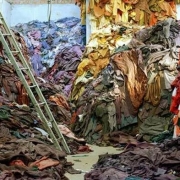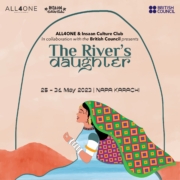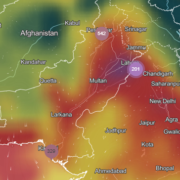The True Cost of Fashion
Did you know that the fashion industry is one of the most polluting industries in the world, alongside oil and chemicals? From obtaining raw materials, manufacturing textiles, garment production, shipping and retail, to use and disposal – fashion has a huge carbon footprint and several ethical implications. To make matters worse, apparel consumption is projected to face a 63% rise by 2030, from 62 million tonnes today to 102 million tonnes, causing a massive depletion in natural resources, especially water – as one pair of jeans alone produces 25kg of carbon dioxide and utilises 7,000 litres of water.
The increase in globalization and over consumption has a significant role to play, specifically fast-fashion companies like H&M and Zara. Since fashion cycles are moving faster than ever, these brands introduce new styles every week, giving trend-conscious consumers easy access to off-the-runway looks at extremely low prices. These cheap price tags come with a hefty environmental and social cost, where thousands of chemicals are used in the production and garment workers are paid below minimum wage in unsafe working conditions. Although we all love looking good (especially when it doesn’t break the wallet), the problem is that we only wear each item a maximum of three times before we discard or donate and move on to the next. Research shows that shoppers in the UK own 10 billion euros worth of unworn clothing, and an estimated 140 million euros of used clothing goes to landfills every year.

With most companies following a traditional, linear supply chain model that aims to maximise efficiency and cut costs, the most crucial problems that arise are over-production, excess inventories and markdowns. Last year, H&M was stuck with US$4.3 billion dollars worth of unsold inventory and decided to put everything on clearance to rid themselves of the excess stock. On the other hand, Burberry destroyed a staggering 28 million pounds worth of clothing instead of discounting or incinerating them, to avoid hurting their brand image. These are just a few examples of the many issues that are embedded deep within the fashion industry.
Since it all starts from the initial design stage, fashion designers need to factor sustainability into their designs before they go into production. Businesses need to be more transparent in terms of fair trade, wages, working conditions and take accountability for their practices. Tools for transformation include integrated sustainability reporting, where a group of companies share business models and what their respective inputs/outputs are and how they are creating value. Environmental profit and loss statements need to be put into place to ensure that businesses aren’t only focusing on the financial profits they make, but also how they benefit the community. Brands need to set the standards and encourage responsible shopping by using celebrities to endorse sustainable fashion like they do with anything else.
So what should we do? As consumers of the fashion industry, we need to reevaluate our purchasing decisions and ask ourselves if we really need a new pair of jeans or shirt if our wardrobes are already overflowing. Similarly in reducing our waste, we need to reflect, reduce, reuse as much as possible. Let’s keep in mind that less is more, and quality is more important than quantity.












Leave a Reply
Want to join the discussion?Feel free to contribute!